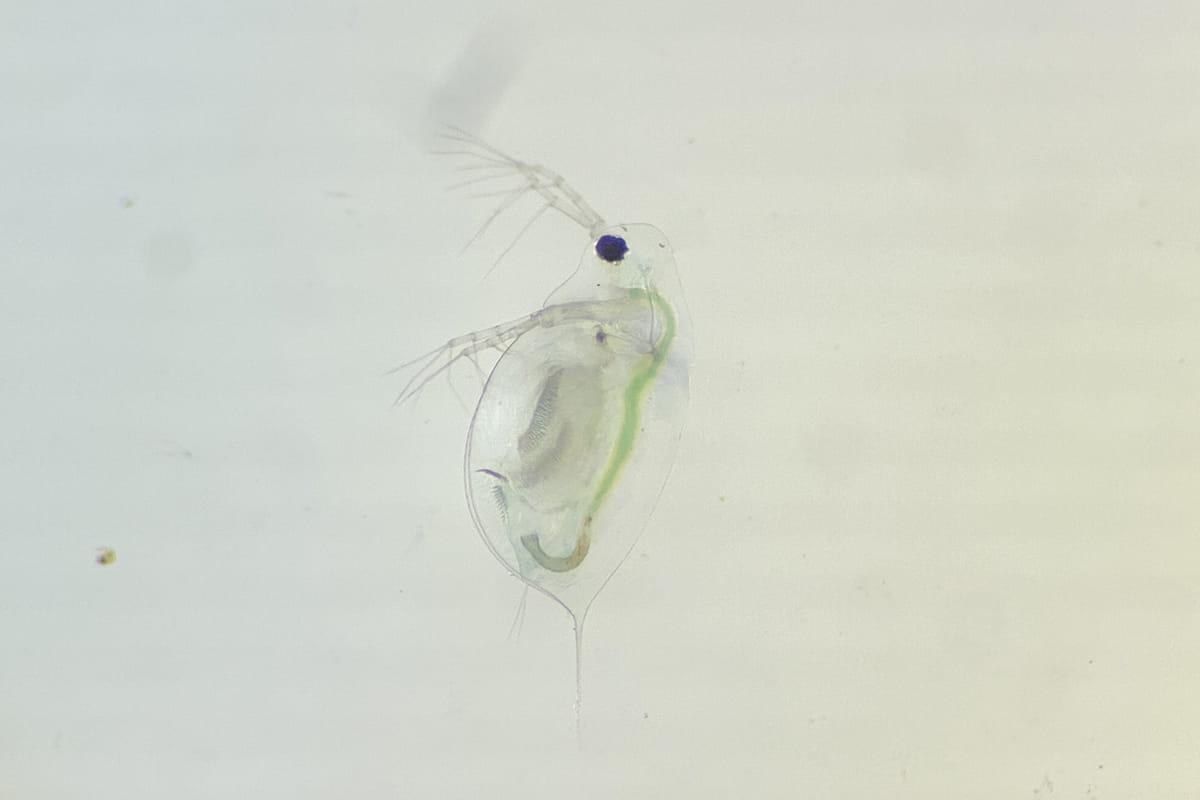UTA research: To avoid predators, water fleas evolve rapidly

In the wilderness of Alaska’s Kenai Peninsula, where massive moose tread along untamed shorelines, researchers from The University of Texas at Arlington are studying the evolution of a microscopic creature.
Matt Walsh, associate professor of biology, and his students are documenting the size and behavioral differences among water fleas in nine Alaskan lakes during a multi-year whole ecosystem restoration initiated by the Alaska Department of Fish and Game (ADFG).
In 2018, after decades of destruction by an invasive species, the peninsula’s lakes were treated by ADFG with the pesticide rotenone, which reset the ecosystems to neutral. A year later, Walsh and a team of international scientists reintroduced native stickleback fish to the lakes. Now he wants to know how water fleas have adapted to the threat of predators.
Kitchen table experiments

In a canoe, UTA alumna Steph Tran (’21 BS, Biology) paddles out to the deepest part of a pond near the team’s rented cabin. She casts a fine mesh net, collecting a pool of tiny organisms. After placing them in a container, she paddles back to the shore.
“We are used to learning in the lab and classroom. Field research is the other side of the story,” she said. “Being on the lake and seeing zooplankton in their natural habitat is really rewarding.”
Three thousand miles from their lab at UTA, Walsh’s students clear their cabin’s kitchen table to set up an experiment. Having access only to the equipment that would fit in their luggage, they have to get creative. Using PVC pipe and black trash bags, they construct a dark, water-filled vertical column and place the water fleas inside. Once the tiny crustaceans have settled in the darkness, the students shine a light from the top of the column, checking the water fleas’ proximity to the light once every minute.
“Water flea migration is influenced by light intensity,” Tran said. “Typically, they swim close to the surface during the day to be near the light and denser concentrations of food. Then at night, they dive to the bottom to rest.”
But the water fleas Tran collected today are different.
Rapid evolution
When Walsh and his colleagues reintroduced stickleback to the lakes, they released two types. One is an open-water swimmer that feeds near the surface. The other is a shore- and bottom-dwelling forager. Each type was isolated from the other and released to populate its own set of lakes.
Walsh’s theory is that, depending on the type of predator present, water fleas will adjust their daily migration habits. Data collected from some of the lakes suggests that to avoid being eaten, water fleas are hanging out at the bottom during the day to hide from their visual predators.
“We now know that evolution occurs really rapidly,” Walsh said. “We’re finding evidence that water flea size and behavior has evolved in as little as three years.”

As they monitor the ecology and evolution of the Kenai Peninsula lakes, Walsh and other researchers will be able to provide information that could help guide future ecosystem restorations by the ADFG.
For now, Walsh is content to conduct fundamental research alongside his students, teaching them about the evolutionary interactions between predators and their prey.
“I hope my students find experiences like this rewarding and fun,” he said. “A lot of undergraduates don’t know that you can pursue graduate degrees in biology and do things like this.”